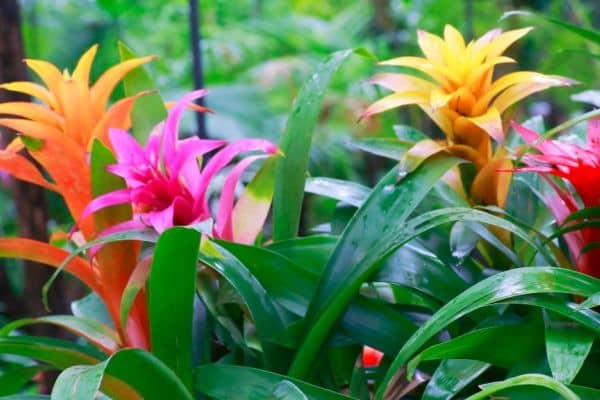Bromeliad is a well-known beautiful plant that has more than 3700 species which is native to tropical Americas and tropical West Africa. They are known as an easy to grow house plant which has colorful flowers.
So here you will know how to grow and care for your Bromeliad plant indoors and outdoors with its type:
Bromeliad Care
Bromeliad plants are mostly grown indoors as they can also be planted outdoors. Their growth time and bloom time are affected a lot by the day length, light, temperature, humidity, water, and feeding. So for them to grow properly you have to look out at their light, temperature, humidity, water, and feeding from time to time. You can also grow them by gluing them to the objects as they can be grown without soil. Most of the indoor plants are planted using a mixture of potting soil and sand. So here are some of the things you can do to help them grow and bloom properly indoors and outdoors:
Light
Ligh is crucial for bromeliads to grow properly if you keep them in full sunlight or direct sunlight they won’t survive. As they require indirect light and get yellowish when they get too much light.
You can increase the light exposure to the bromeliad plants to help them bloom properly. As most of the bromeliad varieties have soft, flexible, spineless leaves usually prefer lower light levels.
Soil
Indoor bromeliads thrive in fast-draining potting soil that drains well but holds moisture for the better growth of plants.
You can also use the orchid mix, charcoal, or soilless potting mix to grow them properly indoors. But you can also use a mixture of two-thirds peat-based soil and one-third sand.
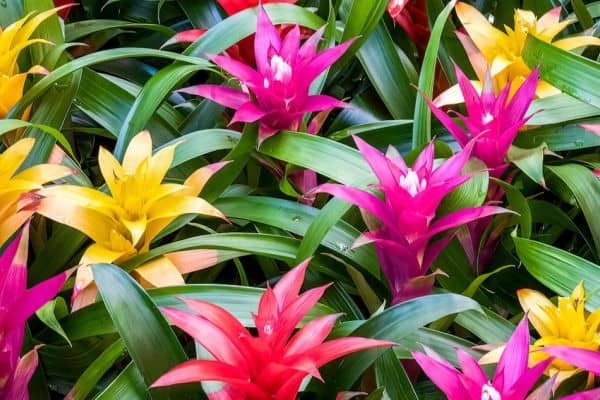
Water
Most of the bromeliad varieties are water tolerant but they need moist, not soggy, soil for them to grow properly. You can water them every one to two weeks in the warmer months and during the colder months, you can water them every two to three weeks.
Remember not to let the bromeliad plant rest in standing water or the roots of the bromeliad will rot. You can also water them if the top two inches of soil is dry or you can also mist them with a spray bottle.
Temperature and Humidity
Just remember bromeliads need protection from cold and direct sunlight. During the cold season indoor planting is safe but if you have planted them in the garden remember to move them indoors. Bromeliads plant needs between 60 and 85 degrees Fahrenheit for them to grow properly and can survive up to 20 degrees but some experts say not to expose them to under 40 degrees.
As for humidity, they require mostly 40-50 percent humidity and is perfect for them during summer for humidity.
Fertilizer
Bromeliads don’t require heavy fertilizers but during their growing season, you can use liquid fertilizer diluted at half strength. Also, remember not to use fertilizers when they are mature plants when the plant begins to flower, or in winter.
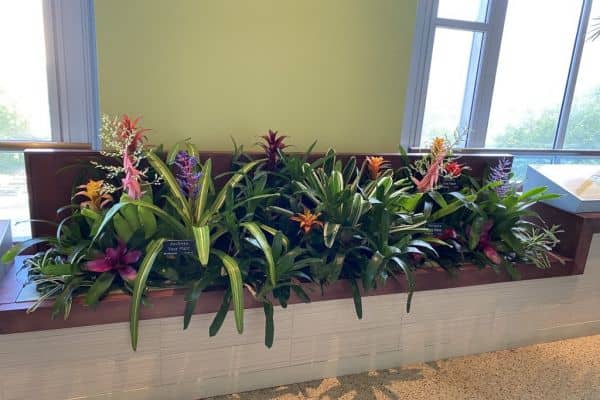
Bromeliad Growing Outdoors
Yes, you can grow bromeliads outdoors easily as they can do best in tropical environments. But remember to bring your bromeliads plants indoors when the colder months begin to hit.
When you are growing bromeliad plants outdoors you will have to grow them in containers filled with shallow soil and on a shaded patio, under a shady tree, or larger plants so they will get some shade during bright sunny days. Direct dun light on bromeliads can cause their leaves to burn.
As containers of plants dry out quicker than ground plants so remember to water them when their soils are dry and soak the soil properly.
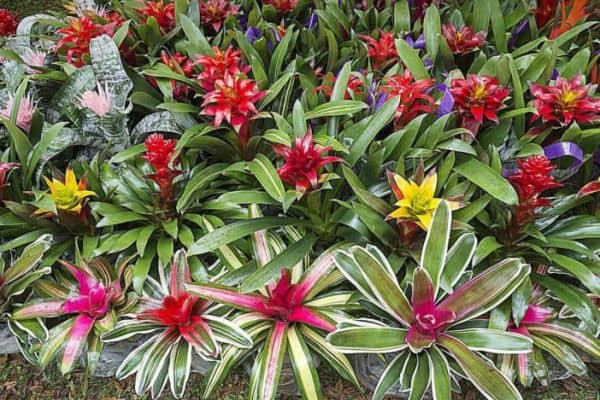
Types of Bromeliads Plants
There are a lot of species of bromeliads available some are harder to grow and take care of while some are easy to grow and take care of. So in this section, we will be talking about the easy-to-grow species of bromeliad plants as they are common and great for beginners too:
- Guzmania: Guzmania varieties have long, flat, and glossy green leaves including common species like G. zahnii, G. lingulata, G. Guzmania sanguinea, and G. monostachia. Most of them have bright red bracts but some species have yellow, orange, purple, or pink. Guzmania can bloom for up to two to four months.
- Neoregelia: Neoregelia varieties have short, fairly flat rosettes of leaves and are one of the most diverse bromeliads species. They have colorful bracts ranging from pink to deep purple. At the same time, some plants can be 1 inch across while others can be as much as 40 inches wide.
- Vriesea: Vriesea varieties have green leaves with irregular dark cross-banding and recurved tips with features tropical, feather-like blooms and variegated foliage. In Vriesea species V. splendens and the hybrid Vreisea also known as Fireworks are popular.
- Ananas comosus ‘Champaca’: Ananas comosus ‘Champaca’ which has dramatic sword-like spiny green leaves and an ornamental pineapple. They are often grown as a houseplant that has miniature pineapples on top of the flower spike.
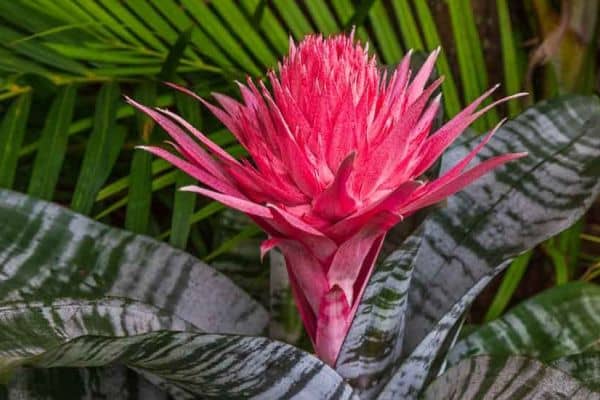
Bromeliad Common Pests
Bromeliad plants are sometimes susceptible to scales, mealybugs, and aphids. But they are mostly free of a lot of pests. If your bromeliad plants get infected by scales you can just dab the bug with a cotton which should be mixed with alcohol. But if your bromeliad plants get infected by mealybugs and aphids you can use the mixture of water and a few drops of dish soap to spray them in the plants.
FAQs
Q. Is Bromeliad an Indoor Plant?
Yes, bromeliad plants can be indoor plants just remember to place them to receive bright, diffused light but not direct sun, including covered porches.
Q. How Long do Bromeliads Last?
Bromeliads plant Lasts for more than two to five years if you give them enough sunlight, good soil, and many more.
Q. Do Bromeliads Only Flower Once?
Yes, Bromeliads only flower once but the flowers bloom for three to six months straight.
Also Read: How to Grow and Care for Goldfish Plant! Know Its Types, Propagation Tips, and Diseases!
